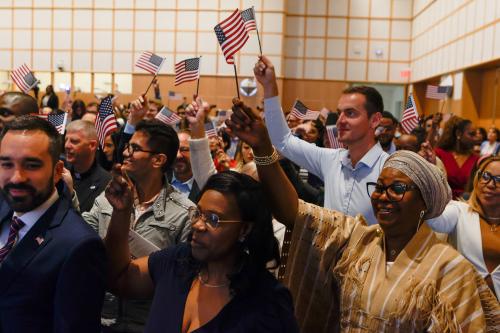Findings
An overhaul of the widely-recognized metropolitan classification system by the federal Office of Management and Budget (OMB) will refashion the way research is conducted and federal dollars are spent. The new system, designed to capture 21st-century settlement patterns, alters the names, types, and boundaries for metropolitan areas and creates new “micropolitan” areas. A comparison of this new system with its older counterpart, reveals that:
- The new classification system positions the Metropolitan Statistical Area as the standard tool for analysis across metropolitan geographies. The old system, by contrast, required users to combine a mix of three categories of metropolitan areas (MSAs and CMSAs or PMSAs) to get complete coverage of metropolitan America. At the same time, the new system provides researchers with more choices for analyzing trends within metropolitan areas.
- New micropolitan areas, together with their metropolitan area counterparts, increase the reach of OMB’s statistical areas to encompass 93 percent of U.S. population and 46 percent of its land area. States with the most micropolitan areas are not necessarily the largest: Texas, Ohio, and North Carolina lead all others; South Dakota has more than California; and New Jersey has none.
- Under the new system, 81 of the nation’s 102 largest metropolitan areas have undergone changes in territory and population. The most common changes involved the addition of new counties to an existing metropolitan area, and the combination of two or more metro areas to form a new, larger metropolis.
- Both metropolitan and micropolitan areas contain principal cities, which replace central cities in the new names given to these areas. Roughly 40 percent of the combined metropolitan population lived in principal cities in 2000, compared to 35 percent in central cities.
- The new definitions alter the social and economic attributes of many metropolitan areas, as well as their national rankings on these attributes. For instance, New York has replaced Los Angeles as the nation’s most populous metropolitan area. San Francisco drops from fourth to fourteenth in metropolitan rankings of college degree attainment.
Not simply statistical arcana, OMB-defined metropolitan and micropolitan areas have real-world implications for public- and private-sector research, for federal programs—think Medicare, Section 8 housing assistance—and for how big-city and small-town residents view the places that they live. This survey provides both casual and expert users with a “field guide” to the new system and its potential impacts in each of these areas.
The Brookings Institution is committed to quality, independence, and impact.
We are supported by a diverse array of funders. In line with our values and policies, each Brookings publication represents the sole views of its author(s).




